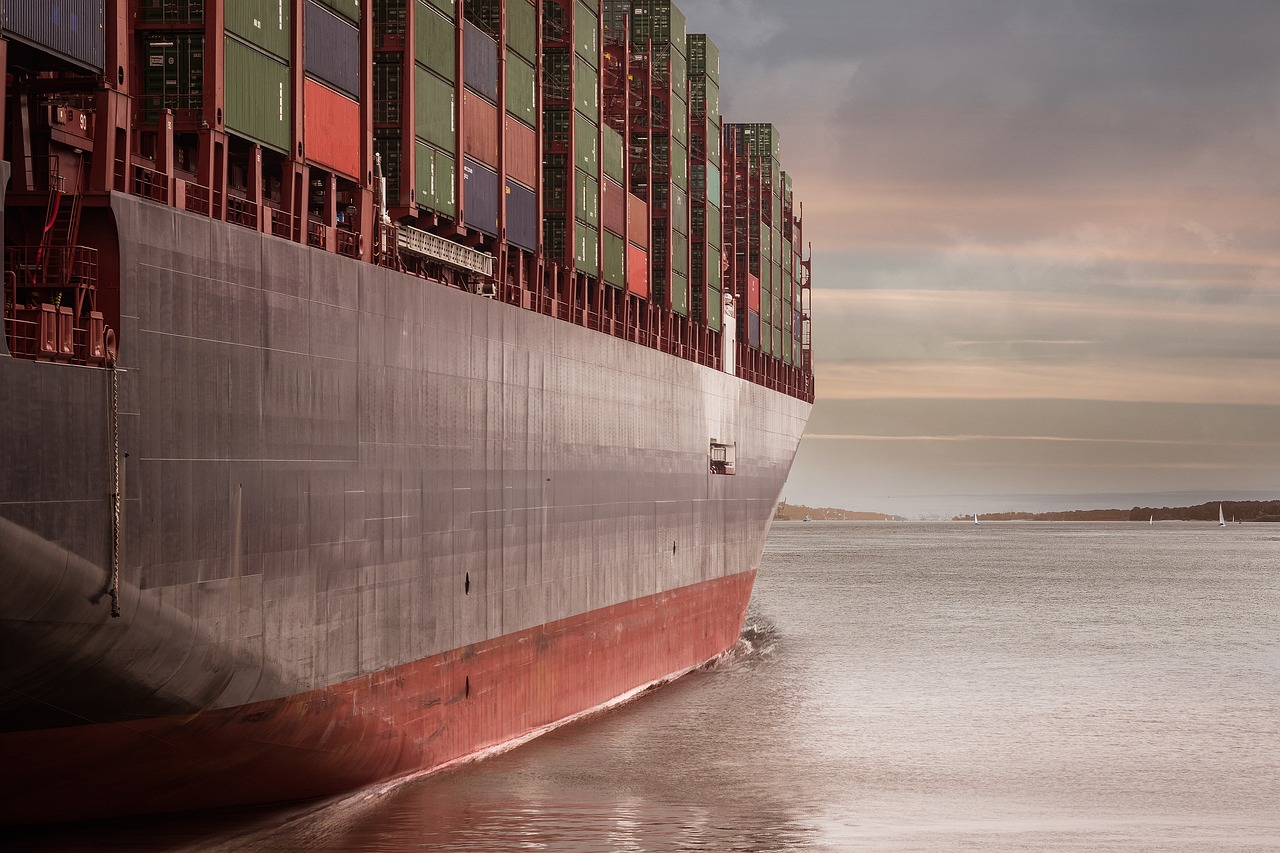Nearly 75% of our planet is covered in water, so before aviation became a viable means of travel, if you wanted to trade with other nations, it probably involved crossing some water. Trade across the world was built around access to the oceans, with sea and river ports still being a characteristic of the majority of global capital cities. But with road, rail and air travel so much more advanced, what are the advantages of shipping goods by sea, and what is the process?
What is sea freight?
Sea freight is a very common and cost effective way of transporting goods across the globe. Large cargo ships take the freight, often loaded into containers, from port to port, with other transportation methods such as road or rail, dealing with the inland journey. There are three main ways to ship freight, in a container, in a roll-on roll-off (RORO) lorry, or dry bulk in the hold of a ship.
Goods can be shipped in full container loads (FCL), where the entire container is taken up by a single consignment, or less than container loads (LCL) where several shipments share a container and are separated when they arrive at port.
How big is a container?
Containers come in a variety of sizes. Standard ISO shipping containers are 8ft (2.43m) wide, 8.5ft (2.59m) high, and come in three lengths; 20ft (6.06m), 40ft (12.2m) and 45ft (13.7m). Extra tall ‘high cube’ containers are also available. Smaller containers are sometimes used, but may require different handling. As a reference, a standard ISO 20ft shipping container has a maximum payload of 25,000kg and a capacity of 33.1m3, enough room to hold around 100 household washing machines. A typical cargo vessel can carry 18,000 containers. That’s a lot of washing machines!
The advantages of sea freight
Shipping by sea is still widely used, especially where there are long distances involved. Sea freight offers many advantages over other methods of transport:
- Cost effective for shipping large or heavy goods.
- Suitable for moving dry bulk products.
- You can ship from almost anywhere to any other country.
- Typically, more environmentally friendly (lower carbon footprint) than air freight.
- Effective links with road and rail when using the container system.
The main disadvantage of sea freight is the time it can take to ship goods, often measured in weeks rather than days, for longer journeys.
What is the sea freight process?
There are various steps when shipping goods by sea, which involve coordinating with land-based travel at either end, customs clearance, and loading/unloading activities. For this reason, specialist logistics companies with shipping experience are often used to arrange the process. Let’s look at the example of importing goods from overseas. The process has the following steps:
- Your chosen logistics company arranges the collection of goods from your supplier.
- The goods arrive by road or rail at port, and are cleared through customs.
- The goods are then loaded into a full container (FCL), or as part of a larger load, if they are less than a full container (LCL).
- The container is then loaded onto the container ship for its sea voyage.
- When the ship arrives in the UK, the containers are unloaded into the dock.
- The goods are then cleared by UK customs, and appropriate duties paid etc.
- In the case of a full container load (FCL) the sealed container will be delivered to you via road, rail or a combination.
- In the case of a less than complete load (LCL), your goods will be removed from the container and delivered as pallets, or loose boxes etc.
Your logistic company will be able to advise on whether a FCL or LCL is the best option, as well as providing costs etc. Tracking of the journey is also available, so you know exactly where your goods are at any time.
How to get a quote for shipping goods by sea
Whilst the process may seem a little complicated, a good logistics company can coordinate all aspects of the shipping, and make the process as easy as possible. To get a quote simply fill in our online form, giving information about the origin and destination of the shipment, the quantity and dimensions of the packaging, and the nature of the items being shipped. It really is as simple as that!
How can we help?
Here at AGI we have a huge amount of experience when it comes to all modes of transport, including sea freight. Whether your shipping needs include air, road, rail, or sea, we have a wealth of experience shipping goods all around the world. If you would like to find out more, please get in touch. We would love to hear from you.
